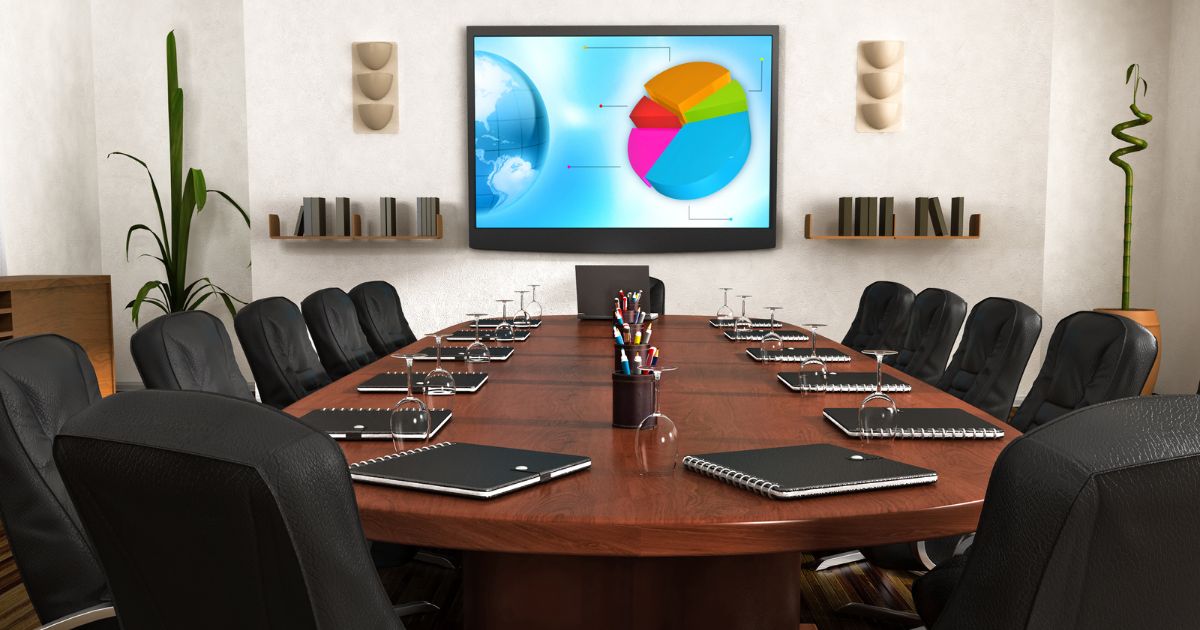COVID-19 has pushed companies to switch their operations to ‘work from home’ mode in the last couple of years. Now, as employees come back to offices, they need spaces that foster collaboration and learning. This is why businesses are redesigning the office space to make a smooth transition.
In particular, companies are re-thinking their meeting room management systems and processes. They have started implementing modern space management and meeting room management systems that align with their goals and allow for a safe in-person experience.
In such circumstances, the challenges and requirements associated with meeting room management have also changed fundamentally. Let’s see how the pandemic has affected the tools and systems companies now use for managing their meeting rooms.
New technology for managing office occupancy
The need for social distancing in a post-pandemic world means organizations need to limit office occupancy rates. Hence, most workplaces are implementing various technological solutions for meeting room management and space occupancy, such as:
- Meeting Room Booking System: This software allows you to book and manage available meetings and conference rooms in a workplace in real-time.
- Desk Booking Software: This application allows employees to find available workspaces and reserve them either in advance or on the spot.
- Visitor Management System: This software records space usage by tracking visitors (employers, staff, contractors, and outsiders) and documenting their location.
The emergence of the hybrid conference model
Thanks to the pandemic, countless businesses have shifted to the hybrid work model. The model’s ease and flexibility have convinced many organizations to even adopt it permanently. This has changed the way in which organizations approach and handle meeting room management.
Though companies are still conducting in-person meetings, they have also recognized the need to blend them with virtual participants. Such hybrid arrangements are essential for involving both on and off-site workers in meetings and conference sessions. Planning as well as managing these diverse settings, including meeting room management, adds a new level of complexity for managers.
This means there is a need for them to use the right technologies to connect both live and virtual audiences and ensure an optimal meeting experience.
Integrating meeting room management with touchless devices
The safety of employees and visitors in a workplace is the topmost priority for organizations today. Setting up digital signages and implementing applications that allow employees to book meeting rooms from their devices ensures a healthy and safe work environment.
Touchless meeting room management also helps facility managers make the workplace environment friendly. They can use the software in their device to remotely monitor appliances and amenities. So, investing in a meeting room management software that integrates easily with third-party applications is now becoming a necessity.
Shifting the focus of meeting room management to flexibility
Your meeting room management strategy should allow employees to locate, reserve, and utilize any available space in the office, depending on their requirements. For example, if the marketing team wants to reserve an open space instead of a closed room, they should be able to do so at the click of a button.
A flexible meeting room management strategy in the post-pandemic world is necessary for promoting an employee-friendly workplace experience and enhancing productivity. But managing such arrangements can be a complex process. So, businesses are deploying suitable meeting room booking systems to monitor and manage their flexible workplaces.
Increased use of data
A key factor in optimal meeting room management is data analysis. Regular and accurate data allows managers to:
- Understand workspace utilization
- Recognize patterns in usage and changed behavior
- Reduce costs
- Monitor sanitization activities
- Reduce ghost bookings
A meeting room booking system allows you to collect and analyze appropriate data points to fulfill all such objectives. Managers can also generate reports for a specific period, be it a day or an entire month. These granular data-backed insights are now more important than ever for organizations to cut costs and optimize space usage.
Parting thoughts
The recent changes in meeting room management emphasize the need for a meeting room booking system. A leading SaaS solution like WorkInSync is an excellent investment in meeting room management.
WorkInSync conference room scheduling software has simple features that make it easy for individuals to use it. You can find and book meeting space, integrate with Google workspace and Microsoft 365 for easy tracking of conference room usage.
Schedule a demo with WorkInSync today to learn more about the product.



